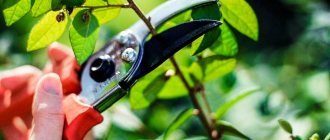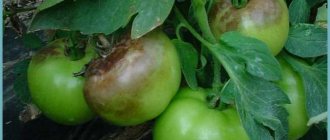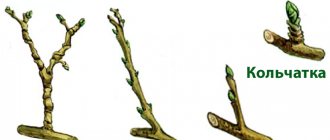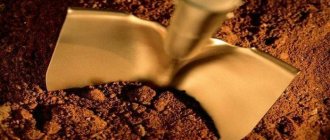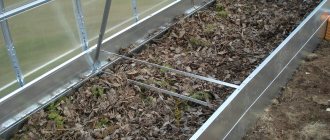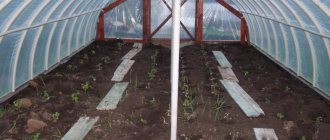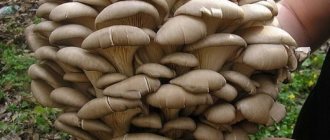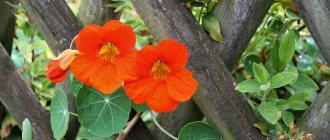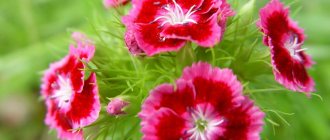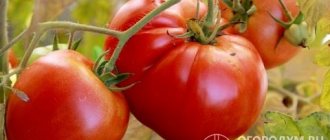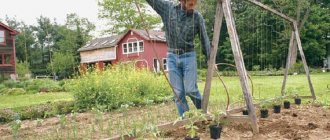Let's first find out: why do you need to whitewash trees?
The answer is simple. Fruit trees have dark trunks, they attract the sun's rays, and at the end of winter the sun begins to get hot. In young trees it can cause bark burns. The old ones have another problem: during the day, the rays heat the trunks, and the water inside them thaws. And at night it freezes and the ice breaks the bark - so-called frost holes are obtained. The peak of temperature fluctuations occurs at the end of February - beginning of March (1). Just think about the numbers: already in February, under the influence of the sun from the south, the temperature in the surface layers of the crust reaches 8 - 14 ° C, and at night in the middle zone at this time frosts down to -35 ° C are possible (2).
And white paint reflects the sun's rays and solves both problems at once.
The need for whitewashing
Slaked lime is the basis of any whitewash mixture
The bark of a tree is an important organ of the plant that protects the internal layers (cambium and wood) from various external influences. Not only the yield, but also the life of any tree depends on the health of the bark and its ability to perform its functions.
Therefore, if gardeners or summer residents want everything to be fine with their trees, they must take care of their bark. In fact, it is relatively simple: since the bark is outside, the gardener always has access to it.
The bark protects the tree from the following factors:
- adverse weather conditions
- temperature fluctuations
- precipitation and ice
- wind and drafts
- sun rays, which can cause burns in spring
- heat and cold
- rodents (mice, hares) and other pests
- vandalism
Under the influence of these factors, the bark itself becomes vulnerable. It cracks, breaks, wears out, gets sick, etc. To help the bark cope with these impacts, it should be protected.
Whitewashing is one of the main methods of protection. It copes excellently with most of the listed negative impacts (perhaps, except for vandalism), strengthening the various protective properties of the bark.
Garden whitewash
The main component of whitewash is lime, that is, calcium hydroxide. The choice of this substance is not accidental. Thanks to its chemical activity, it provides excellent protection for the trunk from fungi and rodents. The white color of lime reflects sunlight, thereby protecting the bark from burns.
Over time, lime absorbs carbon dioxide from the atmosphere, and its top layer turns into calcium carbonate (which is also white and also scatters sunlight well), the thin crust of which protects the rest of the lime layer from destruction and leaching. Thanks to this, the disinfecting properties of lime are preserved for a long time.
In addition, such a structure has good heat-insulating properties and protects the trunk from frost and temperature changes. Thanks to microcracks in the top layer, it still remains “breathable” and allows air to pass through to the bark.
All trees, regardless of age, must be whitewashed. If there is concern that the thin bark of young trees may be damaged by the chemically active substances that make up the whitewash, there are various methods to combat this phenomenon. To avoid burning the bark, it is recommended to reduce the concentration of lime, use chalk instead, etc.
An important issue accompanying the whitewashing process is determining to what height the trunk should be whitened. Of course, ideally it will be necessary to cover all the branches down to the level of the foliage. But in this case, the material consumption will be too large, and this can be done with too much time.
On the other hand, whitewashing only the standard will not be sufficient. To ensure good safety and protection of the tree, it is recommended to whitewash at least the first tens of centimeters of the main skeletal branches. It is recommended to whiten skeletal branches by 20–30% of their length.
Frequency of whitewashing and recommended periods
Whitewashing trees
It is recommended to whitewash trees in the garden twice a year. Some gardeners recommend doing even three whitewashes:
- Autumn . Considered the main one. Produced in late autumn, just before frost
- Spring . It is classified as repeated or renewing. It is carried out at the very beginning of spring (February-March) in order to enter the off-season with guaranteed protected trees
- Intermediate . Actually another update. Performed in the middle of summer
Of course, whitewashing done in the fall is considered the most effective. If for some reason whitewashing was not carried out at the end of autumn, you should definitely whitewash the trees in the spring, since the most dangerous period for trunks is the February thaw, which may be followed by March frosts.
It is during this period that dark trunks can heat up to +12 °C during the day, which will lead to the first attempts at premature sap flow. But as the sun sets, the weather will take its toll, and the temperature drop to -10 ° C will freeze the sap, even despite the layer of bark.
As a result, long cracks will appear on the trunks, a large number of which significantly impairs the processes of nutrient movement. Whitewashing, thanks to the scattering of sunlight, will prevent the latter from heating the dark bark and triggering sap flow.
It is recommended to begin the whitewashing process in the fall after pruning. The optimal time will be the period when the air temperature drops to plus 4–5 °C.
Whitewashing process in autumn
Some gardeners believe that the timing of painting trees is specific to the species. For example, apple trees should be whitened a month after the end of the fruit harvest, in mid-October, and apricot trees should be whitened 2 weeks after pruning, etc. In any case, all stages of whitewashing should be completed before the first snow falls.
If whitewashing in the fall was not done on time, you will have to whitewash the trunks in February, as soon as the temperature allows.
If everything went well with the whitewashing in the fall, then the protective layer can be reapplied later - at the end of March or beginning of April. Such freedom in timing is explained by the fact that autumn whitewashing has already fulfilled its heat- and light-protective function, and until mid-April there is still no one to protect the crop from - pests are still not able to actively move.
Rodents will also avoid the trunks because the lime concentration remains high for almost a whole year.
Intermediate, or summer, whitewashing is carried out only if the whitewash layer has begun to be washed off by rain or has peeled off. It should not be done if the tree has already begun to bear fruit.
Why whitewash trees
Bark is a kind of protective covering of trees. It is she who suffers primarily from various changes in the external environment, for example: from the scorching rays of the sun, frost, sudden changes in temperature, cold strong wind, from rodents and other pests, etc. Under the influence of unfavorable external factors, the bark eventually becomes very rough, cracks and may begin to peel off. To make it clearer, just compare the rough, cracked surface of an old plant and the smooth, thin skin of a young tree.
Since the bark of trees takes the blow first, it is imperative to monitor the condition in which it is located. Moreover, with regular whitewashing of tree bark, it will be reliably protected from:
- sunburn in winter and spring, because at this time there are no leaves on the plant, and its stems and trunk are defenseless against scorching rays;
- sudden changes in temperature, due to which cracks appear on it;
- frostbreaker;
- from harmful insects that settle in tree bark.
That is why every experienced gardener knows that whitewashing trunks must be approached with great responsibility. At the same time, remember that it is necessary to whiten not only fruit trees, but also decorative ones.
WHITECHATING TREES IN AUTUMN
Composition of the whitewash mixture
Composition of the whitewash mixture
The whitewash mixture consists of several components and additives that perform certain functions. Understanding these functions will allow you to correctly select the composition of the mixture and, if necessary, replace the missing components with their functional analogues.
Whitewash base
Lime
In most cases, slaked lime is used as the main component of whitewashing. It is obtained by diluting quicklime in water. Depending on the amount of water, one of three types of mixture is obtained:
- fluff (a mixture of quicklime and water in a ratio of 1 to 1)
- lime dough (proportion 1 to 1.5)
- lime milk (1 to 3)
Each type of lime is used in corresponding recipes. Mostly fluff is used, which has the consistency of sour cream. Other types are usually used if they were obtained in advance.
They are used instead of fluff in appropriate proportions (take 25% more dough, 50% more milk). Lime slaking should be completed 2-3 hours before preparing the whitewash mixture.
Lime slaking for preparing whitewash mixture
Attention! When quenching, the reaction temperature can reach up to 150 ° C, so at home mixing should be done in a metal container (for example, an old bucket) and precautions should be taken when working with gloves. Naturally, you need to start preparing the mixture when the hot lime has cooled down sufficiently.
Chalk can be an alternative to lime. But this is a very compromise solution, since it is chemically neutral and cannot provide the necessary level of protection against infections. In addition, chalk is more easily washed away by water. To prevent it from being washed away by precipitation, it is recommended to apply an additional protective layer to the dried chalk whitewash - for example, oil paint.
However, the potential harm to the delicate and thin bark of chalk is significantly less (since thin bark can get chemical burns from lime), so chalk mixtures are used to whiten young trees.
Additionally, the base may include kaolin clay. It is necessary to give the mixture greater viscosity and good adhesion to the bark. In addition, clay will be a substance that strengthens cracks and minor damage to the bark. Thus, thanks to this component, additional protection against infection will be provided.
Fungicide
Treating apple trees against diseases and pests in the fall
This is a preventive remedy designed to protect the bark from fungal diseases. The presence of this component will enhance the effect of other antifungal agents that were previously applied to the tree bark. Most often, copper sulfate is used for this purpose.
Fastening component
Whitewash
Some kind of glue (PVA, wallpaper, carpentry, etc.) or soap can be used as a means to ensure that the mixture sticks to the tree bark. For young trees or seedlings that were grown in nurseries, it is recommended to use soap, since it is a more gentle product compared to glue.
Additional components
Manure is a natural adhesive and antiseptic component of whitewash
In addition, the whitewash mixture may include other components. Usually they enhance the effect of the main components - they cause better “sticking” of the mixture to the bark, and enhance antibacterial or antifungal properties.
These may be:
- manure (or mullein) - natural products that provide better adhesion to the bark, and also have antiseptic properties
- carbolic acid – additional protection against rodents (due to odor)
- milk or whey – provide better adhesion and make the protective layer last longer
Cow or horse manure is suitable for use as a whitewashing ingredient. Sometimes, to improve its adhesion (if it is fresh and too liquid), finely chopped straw or shavings are added to it.
Using similar processing tools
In addition to the popular whitewashing with lime, solutions based on other ingredients are used. They are used as substitutes or to complement lime mortar.
Preparing the mixture for whitewashing
Preparing the mixture for whitewashing
You can use a ready-made mixture (by purchasing it at a specialized garden store and diluting it with water, according to the instructions), or you can prepare the composition yourself. There are a large number of recipes for preparing the mixture and you can use any of them that is suitable for a given situation.
In general, the composition depends on what types of trees and what age they are, but there are also universal recipes suitable for almost all situations. As practice shows, the mixture recipe is predominantly selected based on the presence of certain components.
Most popular recipes:
- 2.5 kg of lime (fluff), 0.5 kg of copper sulfate and 10 spoons of wood glue are dissolved in 10 liters of water.
- 2 kg of lime are dissolved in 10 liters of water, 0.3 kg of vitriol, 1 kg of sifted clay are added and 5 liters of manure are added.
- 2.5 kg of chalk is dissolved in 10 liters of water, which must be thoroughly mixed with 100 ml of flour paste
- 1 kg of manure, 1 kg of lime and 0.2 kg of copper sulfate should be mixed in 8 liters of water
- In 10 liters of water you need to dilute 2 kg of lime, 0.4 kg of copper sulfate, 100 g of casein glue
The most important thing in making a whitewash mixture is the correct selection of lime concentration. This is especially important for young trees. In this case, it is better to make the solution less concentrated.
Necessary equipment
To process trees, you need to have on hand:
- sandpaper for stripping old, brittle bark;
- a wide brush for old trees and a roller for seedlings;
- whitewash or paint.
You can reduce the amount of work using a spray gun. It will reduce physical labor to a minimum, allowing its owner to do more important things.
Whitewash sequence
Whitewashing a tree in autumn
You need to understand that whitewashing fruit trees is not just spreading the composition over the trunk with uniform and beautiful placement of layers of lime. Although, of course, there is an aesthetic aspect in the process, you should always remember that the main thing in whitewashing is protection.
Therefore, preparation for whitewashing and its implementation must be carried out according to all the rules. The complete whitewashing cycle consists of four stages performed sequentially.
Barrel cleaning
Barrel cleaning process
Most trees (especially mature and frankly old ones) do not have smooth bark. Over time, it cracks, peels off, various foreign bodies and formations appear on it, etc. In addition, various parasitic or symbiotic organisms - mosses and lichens - can settle on the bark.
All this must be removed from the tree before whitewashing. For this purpose, you can use special devices in the form of a special scraper, sponge, knife, etc.
The barrel cleaning process is carried out at high air humidity. Ideal after rain. Small cracks should be treated with plastic or wooden scrapers so as not to damage the bark. You can also use a stiff plastic brush to remove dead parts. The use of metal tools at this stage is undesirable. Cleaning the barrel with a plastic scraper is shown in the photo below.
At this stage, the soil under the tree should be covered with oilcloth or some kind of fabric so that all falling pieces of bark, as well as moss, lichens and other foreign bodies that may contain potential pests and their larvae, are collected and subsequently destroyed (it is best to burn).
When moving from one tree to another, it is recommended to treat instruments with a disinfectant composition to eliminate the possibility of transferring infections.
Disinfection of the trunk
Preparation of a spray composition based on copper sulfate
After the top layer of bark has been cleaned, it is necessary to disinfect the trunk, especially those places where cracks and other damage are located. This will destroy almost all harmful organisms that could remain on the tree after cleaning.
In addition, since the tree may be further injured during the cleaning process, potential entry points for infections into the bark appear.
Disinfection is carried out with chemicals. In this case, you can use the following recommendations:
- Wash the barrel with an ash-soap solution. To prepare it, dissolve about 3 kg of wood ash and 60 g of laundry soap in 10 liters of warm water (temperature +40 °C). The last component is necessary to ensure adhesion of the solution to the bark. The treatment is carried out using a brush while the liquid is still warm.
- Use ash lye for washing. To obtain it, mix 3 kg of ash and 10 liters of water, after which the mixture is brought to a boil and cooled. The liquid in the container above the sediment level is the lye. It is poured into a separate container, diluted with water in a concentration of 1 to 1 or 1 to 2 and poured into a sprayer. Then spray the entire whitewash area
- Spraying the trunk with copper-containing preparations. This could be Bordeaux mixture, a 3% solution of copper sulfate, Oxychom, etc.
- Application of iron sulfate 6%
Barrel processing
You should not use chemicals year after year. Copper, iron and sulfur can accumulate in the bark and not be washed away by precipitation throughout the year. Therefore, it is recommended that gardeners change the type of disinfectant used every year.
Treatment of wounds
Treating damaged areas of wood with garden varnish
Once the trunk is cleaned, all major wounds and damage to the bark will become clearly visible. They, naturally, need special treatment so as not to become a place for infection to penetrate into the trunk.
Various means can be used to treat wounds:
- clay mash
- wax-based garden putty
- garden var
- biomasks
- special pastes
Garden varnish is the most popular means of treating wounds. This is a cheap and effective remedy that has a universal purpose. Thanks to the pitch, it not only protects the tree from infections, but also prevents the damaged areas from drying out.
Garden var
Var can be purchased at a specialty store or made independently.
To prepare it you will need:
- 400 g rosin
- 200 g wax
- 100 g of any fatty component (lamb or pork fat)
- 50 ml ethanol 90%
Preparation is carried out as follows:
- In a water bath, mix rosin, fat and wax until a homogeneous thick mass; you need to mix everything thoroughly until the lumps disappear completely
- While continuing to stir the mixture, carefully pour alcohol into it.
- remove the mixture from the bath and let it cool
- the composition is infused for 1–2 days, after which it is packaged in sealed containers with a mark on the date of manufacture (this product can be stored for no more than 5 years)
Garden pastes, or biomasks, are substances of a viscous consistency that are able to fill damaged areas and have good contact with the bark. Thanks to their adhesive properties, they are able to stay on the surface of the bark for quite a long time.
Applying whitewash
Washing brushes for whitewashing trunks
Only after all the preliminary stages have been completed do they begin whitewashing. The choice of composition, as well as issues of whitewash height, were discussed earlier.
It is desirable that the composition include slaked lime. The height of the whitewash must be no less than the full height of the trunk; the ideal option is to whitewash the trunk and an additional 1/5–1/3 of the length of the skeletal branches.
The whitewashing itself, unlike the preliminary preparation, should be done on a dry day. In addition, the tree bark must also be dry. Therefore, you should carefully study the weather forecast during this procedure.
It is recommended to apply whitewash in several layers (from 2 to 3), although this is not a mandatory requirement, since sometimes this is technically impossible to do. Usually the second and subsequent layers are applied after the first has dried, and such a process can take a long time.
Whitewashing wood with a flat brush
For complete drying after rain or fog, at least 2 days are required in clear weather.
Another important issue that needs to be decided at this stage is the choice of tool to use. Despite the apparent simplicity of the question, it is very important, since the method of applying whitewash also depends on the type of solution used and the type of wood. Let's look at the different types of tools that can be used.
A regular sponge brush is actually a universal tool suitable for whitewashing any type of trunk - both smooth, textured or rough bark. It is cheap, does not injure the bark, and can be used to paint any details of the bark relief.
The only drawback of such a tool is the relatively small amount of whitewash applied in one pass. With its help, covering the trunk in several layers becomes quite a difficult task.
A more advanced option is a flat flute brush. You can use a round one, but with a flat whitewash it will be more convenient, and the composition consumption will be a little less.
Long pile rollers used for whitewashing trees
This tool would be ideal for young trees or those with smooth bark. The main advantages of whitewashing with a flat brush are speed and convenience.
To whitewash large diameter trees with rough and thick bark, you can use a paint roller. The advantage of this method is that a roller with long pile penetrates into the deepest crevices on the surface of the bark. This allows you to apply whitewash to the trunk in literally one pass.
If there are a large number of trees in the garden, you can use the semi-industrial whitewashing method using a spray gun. Since, unlike acrylic or water-based paint, large fragments can be found in the whitewash mixture, it is necessary to use nozzles with holes of larger diameter.
A typical spray gun used as a spray for whitewashing trees.
